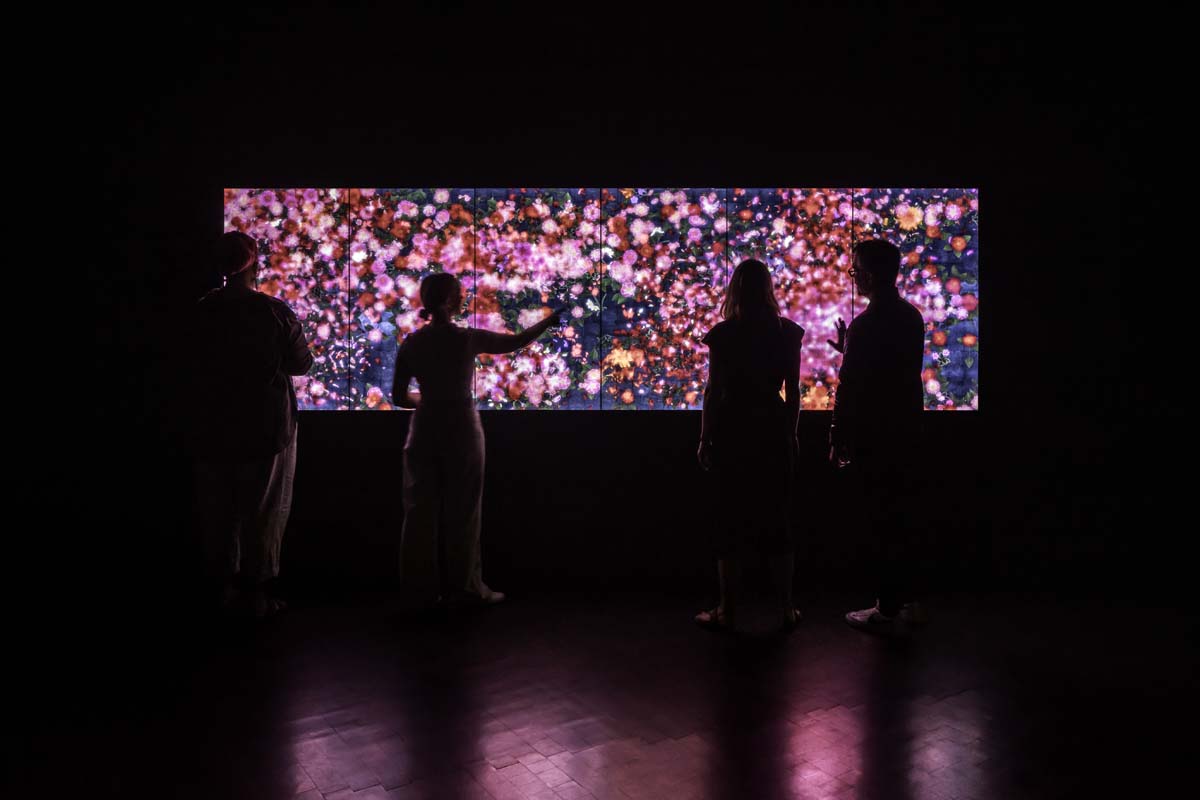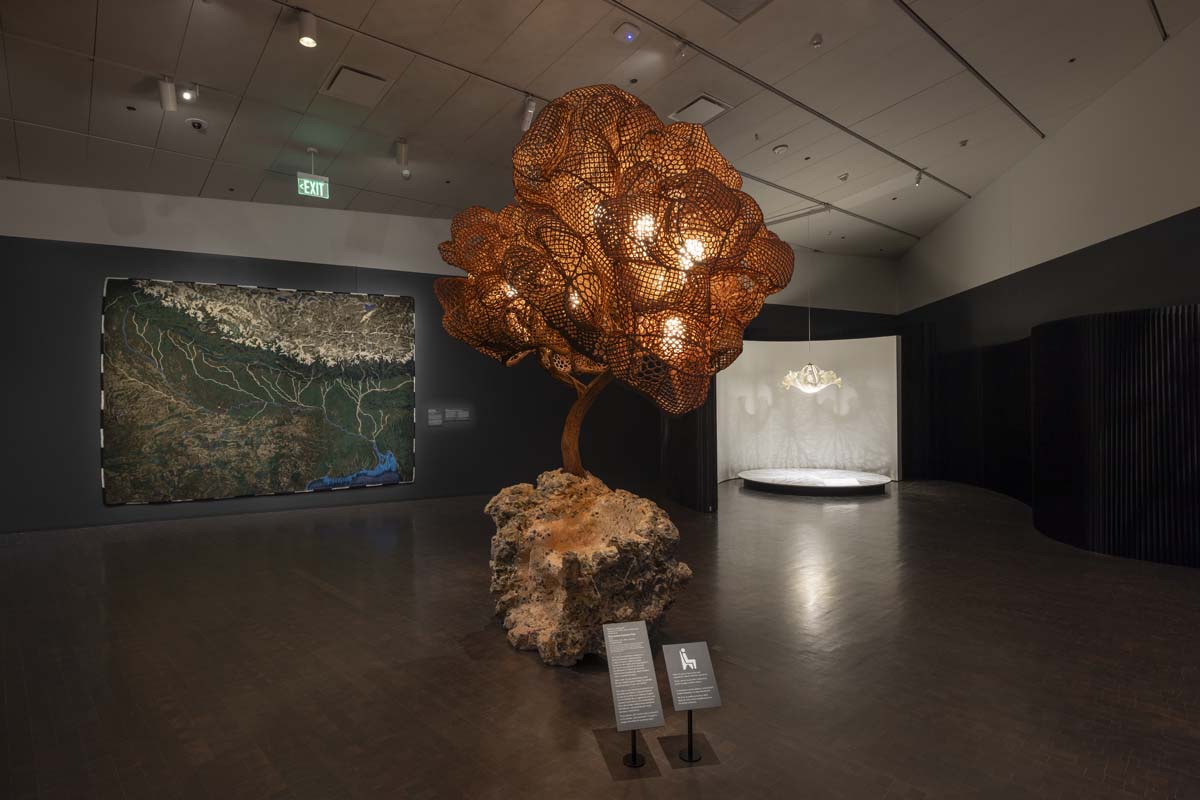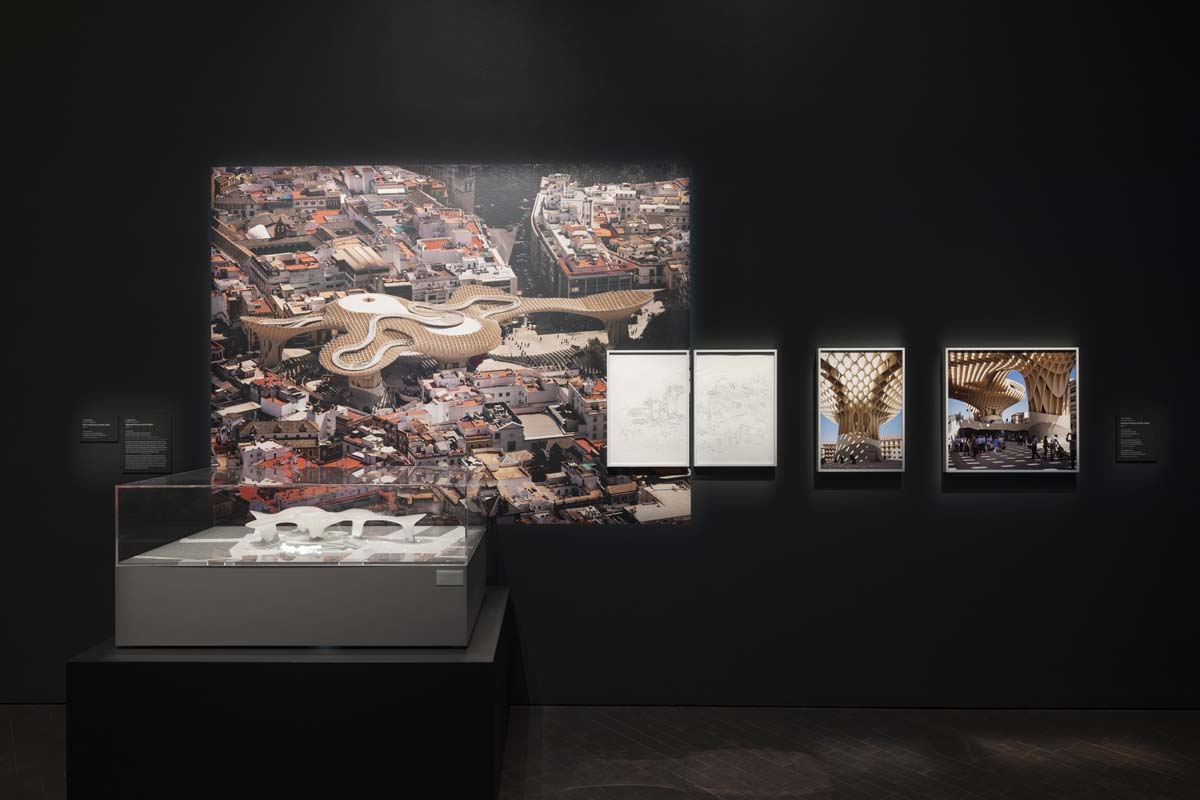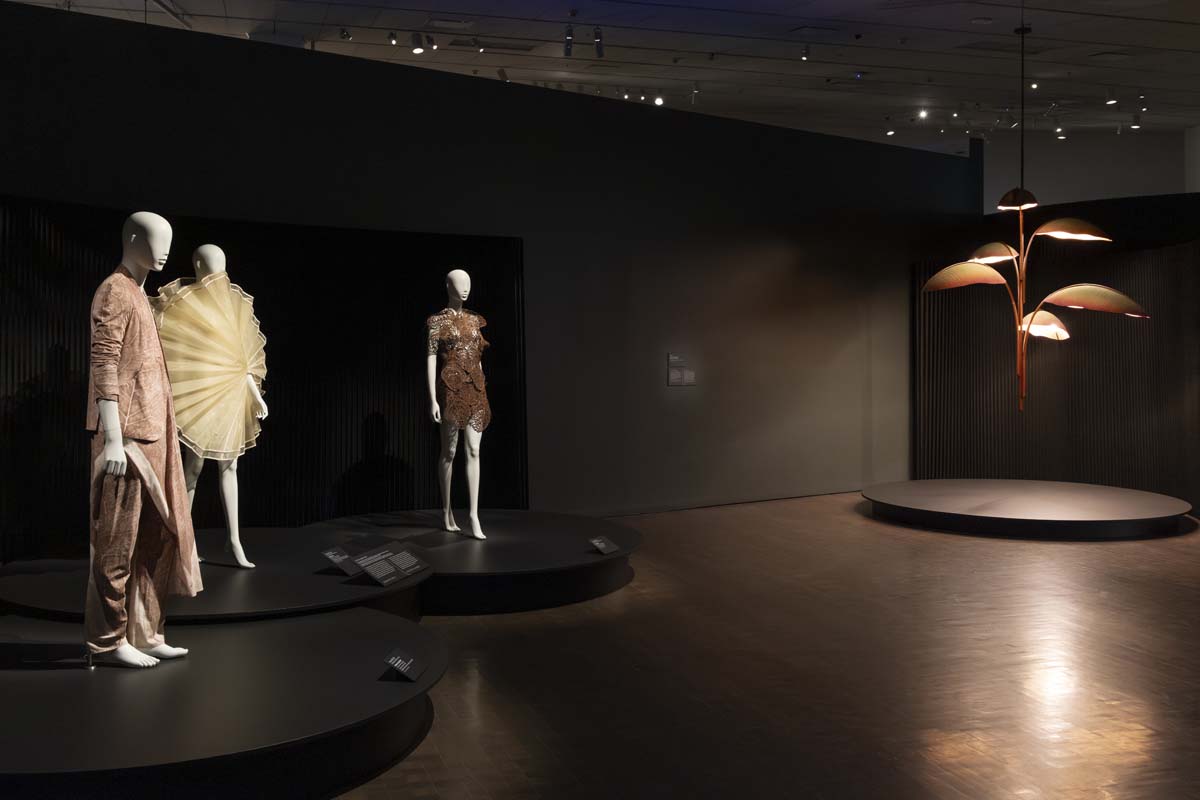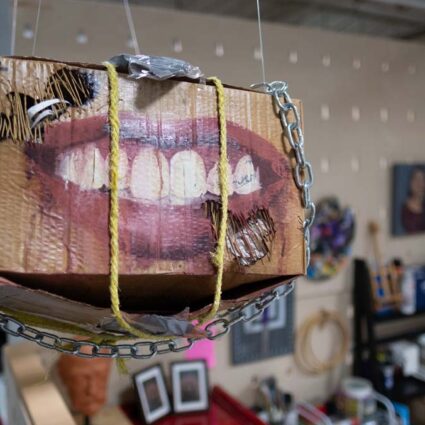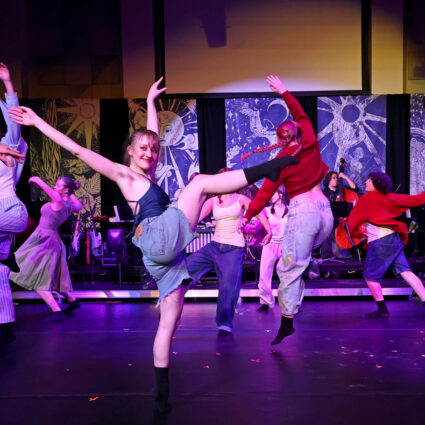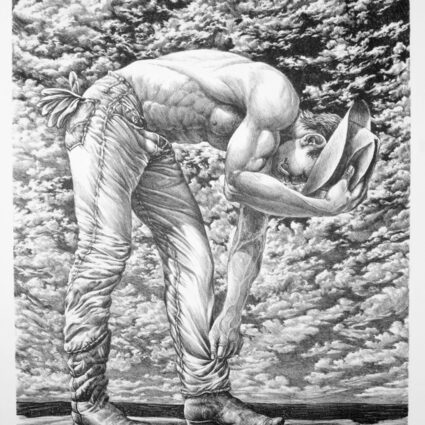“Biophilic design,” which emulates the natural environment, is undoubtedly having a moment. So how does Biophilia, the Denver Art Museum’s latest design exhibition, expand on this discourse?

Biophilia: Nature Reimagined
May 5–August 11, 2024
Denver Art Museum
The term “biophilia” is attributed to American biologist and author Edward O. Wilson, who theorized that as humans evolve, they become more intricately intertwined with the natural world.
At the Denver Art Museum, a new design exhibition, organized by curator of architecture and design Darrin Alfred, highlights how nature has been and continues to be a major source of inspiration, attempting to situate artists and designers as key players in this movement to reconnect with the natural world. Titled Biophilia: Nature Reimagined, the exhibition features over eighty objects ranging from furniture, fashion pieces, and architectural models to immersive installations and digital works, made by artists and designers all around the world.
Whether you’ve explicitly realized it or not, design trends in many fields have been favoring organic forms and natural elements in recent years. Glossy white walls are replaced by earth tone colors with a natural texture finish. Moss rugs are all the rage. The 2024 Met Gala theme was “The Garden of Time” to celebrate the Costume Institute’s new exhibition Sleeping Beauties: Reawakening Fashion, sparking a plethora of botanical looks on the red carpet. What is known as “biophilic design” is undoubtedly having a moment. So how does the DAM’s latest exhibition expand on this discourse?
When entering the exhibition space, I immediately feel like I am walking into a dark cave. The walls and floor are black, and the room is dimly lit. The object pedestals are also painted black, blending in seamlessly with the background, giving each object the appearance that it is magically floating, glowing like a crystal in the dark. Compared to the typical fluorescent lighting museums often utilize, this setting instantly calmed me. I found myself walking slower, drawn to each object like a moth to the light.
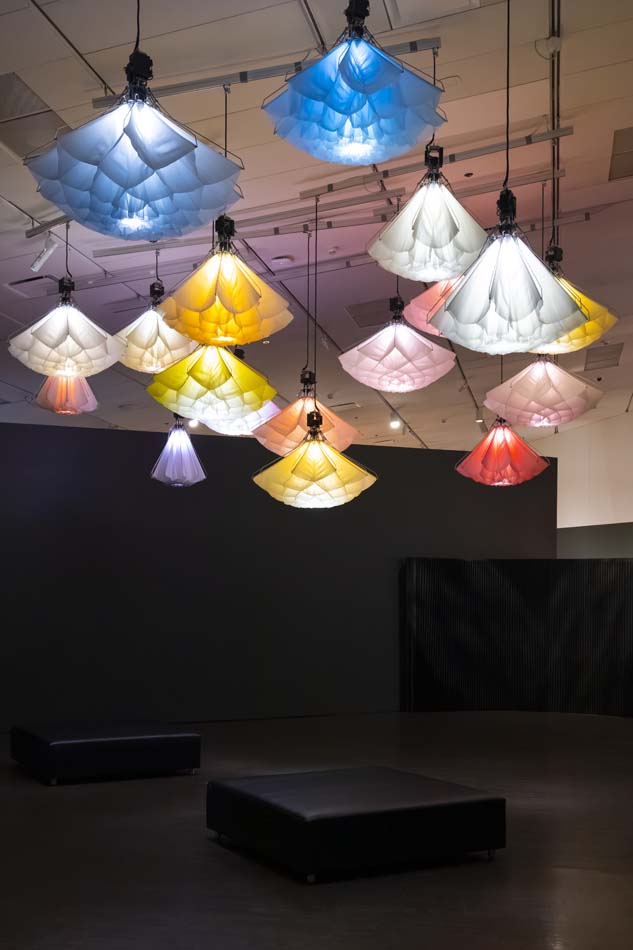
Biophilia is split up into three overarching themes: Natural Analogues: Form and Pattern, Natural Systems: Processes and Phenomena, and Topophilia: People and Place.
The Natural Analogues portion takes a look at naturally occurring shapes, structures, and patterns and how designers have utilized these forms functionally and aesthetically. Here you can find various botanical chandeliers or an armchair that looks like it is made out of thousands of flower petals.
The Natural Systems section highlights natural phenomena and seasonal processes. The star of this portion was an immersive installation titled Meadow (2017) by Amsterdam design duo DRIFT. The kinetic installation consisted of soft pastel mechanical flowers—whose colors were inspired specifically by wildflowers native to the Colorado landscape—hanging from the ceiling, opening and closing in a melodic rhythm with gentle music playing in the background. I laid on my back under the robotic flowers for an indeterminate length of time, mesmerized by tranquil movements. Equally hypnotizing was the six-screen interactive digital work titled Flowers and People: A Whole Year per Hour (2020) by teamLab—an art collective based out of Tokyo—which depicts a year’s worth of flowers blooming over the course of an hour, the patterns continually changing as visitors interact with the piece in real-time.
Lastly, Topophilia focuses on the emotional connection between humans and their environment, exploring landscapes and native ecology. These works dive into specific climates and their history, some mirroring topographical maps while others call attention to pollution and the growing threats that endanger these environments.
The exhibition’s call to action, which was broadly to become more aware of our intrinsic connection with nature and to preserve it for future generations, stumped me. I cannot say that Biophilia compelled me to “reconnect with nature” as much as it fostered appreciation for the innately complex designs found within nature and how humans have used that as inspiration within the field of art and design. But Biophilia lacked the sort of impact that might elevate it past being a mere survey exhibition of the movement. Conversely, it can often be difficult to attract the general public to a “design” show, but in this case, the familiarity of the subject matter combined with the natural textures and shapes found within each piece made the exhibition approachable and soothing for anyone.
